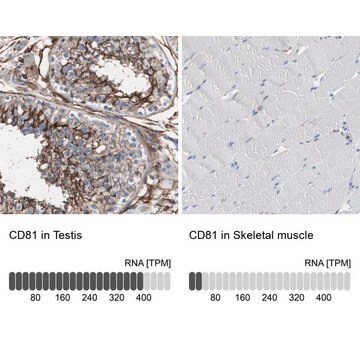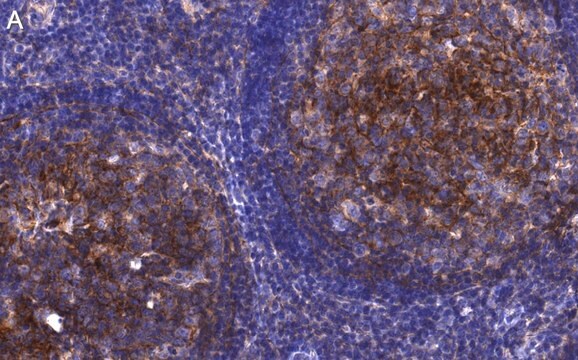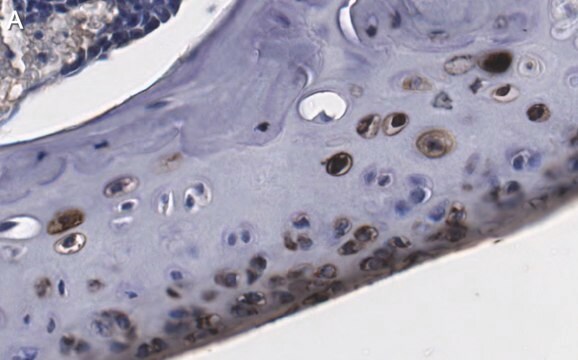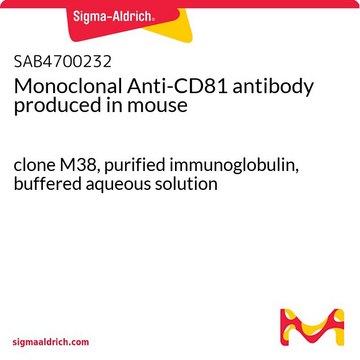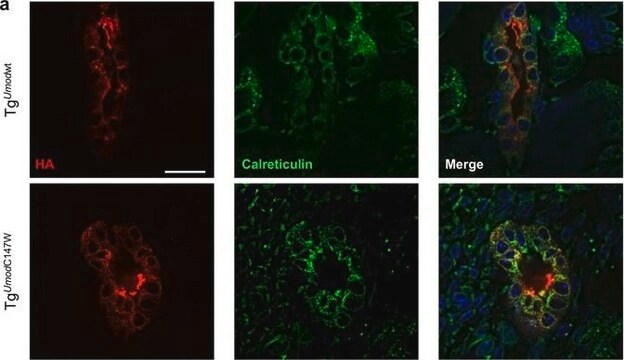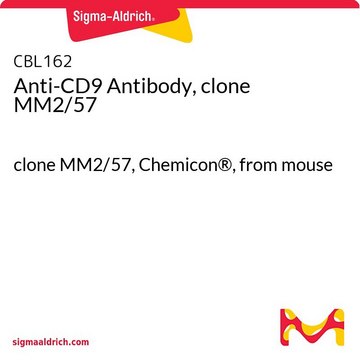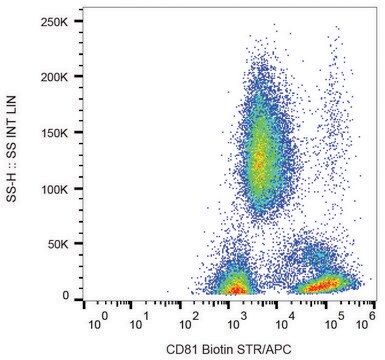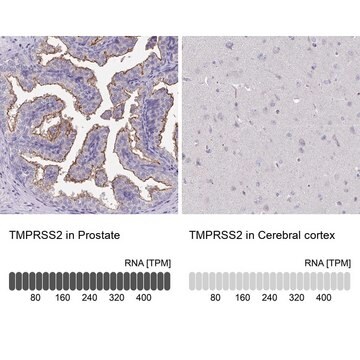MABF2061
Anti-TAPA-1 (CD81) Antibody, clone 5A6
clone 5A6, from mouse
Synonim(y):
CD81 antigen, 26 kDa cell surface protein TAPA-1, Target of the antiproliferative antibody 1, Tetraspanin-28, Tspan-28
About This Item
Polecane produkty
pochodzenie biologiczne
mouse
Poziom jakości
forma przeciwciała
purified immunoglobulin
rodzaj przeciwciała
primary antibodies
klon
5A6, monoclonal
reaktywność gatunkowa
human
opakowanie
antibody small pack of 25 μL
metody
flow cytometry: suitable
immunoprecipitation (IP): suitable
inhibition assay: suitable
western blot: suitable
izotyp
IgG1κ
numer dostępu NCBI
numer dostępu UniProt
Warunki transportu
ambient
docelowa modyfikacja potranslacyjna
unmodified
informacje o genach
human ... CD81(975)
Opis ogólny
Specyficzność
Immunogen
Zastosowanie
Inflammation & Immunology
Immunoprecipitation Analysis: A representative lot immunoprecipitated TAPA-1 (CD81) in Immunoprecipitation applications (Clark, K.L., et. al. (2004). J Biol Chem. 279(19):19401-6; Oren, R., et. al. (1990). Mol Cell Biol. 10(8):4007-15).
Flow Cytometry Analysis: A representative lot detected TAPA-1 (CD81) in Flow Cytometry applications (van Zelm, M.C., et. al. (2010). J Clin Invest. 120(4):1265-74; Oren, R., et. al. (1990). Mol Cell Biol. 10(8):4007-15).
Inhibition: A representative lot inhibited the growth and proliferation of OCI-LY8 cell line. (Oren, R., et. al. (1990). Mol Cell Biol. 10(8):4007-15).
Jakość
Flow Cytometry Analysis: 1 µg of this antibody detected TAPA-1 (CD81) in one million HUH-7 cells.
Opis wartości docelowych
Postać fizyczna
Przechowywanie i stabilność
Inne uwagi
Oświadczenie o zrzeczeniu się odpowiedzialności
Nie możesz znaleźć właściwego produktu?
Wypróbuj nasz Narzędzie selektora produktów.
polecane
Kod klasy składowania
12 - Non Combustible Liquids
Klasa zagrożenia wodnego (WGK)
WGK 2
Temperatura zapłonu (°F)
does not flash
Temperatura zapłonu (°C)
does not flash
Certyfikaty analizy (CoA)
Poszukaj Certyfikaty analizy (CoA), wpisując numer partii/serii produktów. Numery serii i partii można znaleźć na etykiecie produktu po słowach „seria” lub „partia”.
Masz już ten produkt?
Dokumenty związane z niedawno zakupionymi produktami zostały zamieszczone w Bibliotece dokumentów.
Nasz zespół naukowców ma doświadczenie we wszystkich obszarach badań, w tym w naukach przyrodniczych, materiałoznawstwie, syntezie chemicznej, chromatografii, analityce i wielu innych dziedzinach.
Skontaktuj się z zespołem ds. pomocy technicznej